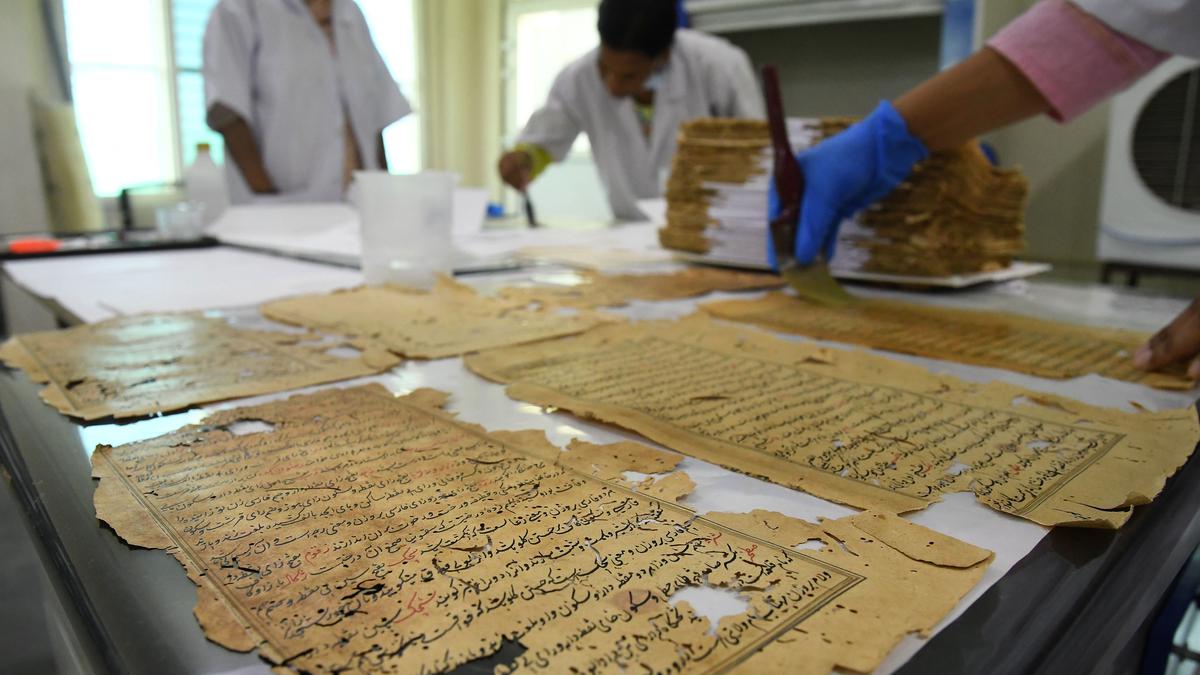
Salar Jung Museum strives to conserve and restore artefacts
The Hindu
Salar Jung Museum in Hyderabad is reviving priceless treasures with a team of 10 conservators-restorers and seven support staff. 3D digitisation, conservation and restoration of artefacts, manuscripts, marble objects, canvas paintings, textiles and carpets are being undertaken.
The third floor of the Salar Jung Museum in Hyderabad is abuzz with efforts to breathe new life into priceless treasures from the past. Away from the hustle-bustle of visitors at the Museum’s 39 galleries, this area hosts the conservation/restoration facility with a team of 10 conservators-restorers and seven support staff. Salar Jung Museum is among the five museums across the country that will undertake 3D digitisation as part of a Government of India initiative to conserve and retain the cultural identity of the collection.
Back in 2018, a digital imprint of around 10,000 artefacts — mostly porcelain sculptures (3D objects) — was done at the Museum. Director Narender Reddy recalls the ‘crude technology’ used : “An object was photographed twice. After the first capture, the camera would be moved to a distance to shoot the image again; then both photographs were merged to give a three-dimensional effect.”
Now curators and trained conservators play a significant part in the conservation process. Curators first identify objects that need restoration and inform conservators about them. Artefacts could be physically damaged due to various reasons: biological deterioration by insects, rodents, and birds, weather conditions like temperature and humidity, and sometimes even improper/ inappropriate cleaning. “The curator consults the conservator and they take preventive or curative steps for the restoration,” says Narender Reddy.
Assistant curator Kalpana Awasthi, with a decade-long experience in conservationexplains that photographing the object to be restored is the first step. Manuscripts affected by biological infestation are fumigated and documented only after three weeks. Marble objects are checked for cracks and missing parts; canvas paintings are checked for paint layer cracks, discolouration or vertical cracks.
“Conservators need a lot of patience,” says Akshata Haste T from the manuscript team. She and her colleague Jayshree Acharya are carefully stitching together sepia-toned pages of an Arabic manuscript at their temperature-controlled workstations. The pages are brittle, some torn and some eaten away in patches by termites. Once the manuscript is documented and photographed, it is carefully cleaned with a brush and its acidic levels checked with a pH strip. “The pages turn yellow due to acidification,” explains Akshata, adding “Water and special detergents are used to clean paintings in aqueous method. Since paper is a fragile medium, we follow a non-aqueous method — using ethanol and barium hydroxide, instead of water — to clean.”
Thereafter, a Japanese (lamination) tissue paper is attached to support the ‘spine’ of the torn paper. Depending on the condition, it takes around three months to restore a book.
Restoring the museum’s exhibits — sculptures, paintings, textiles, carpets — is a continuous process here. While in 2021, 389 exhibits (sculptures, paintings, miniature paintings, textiles and carpets), were restored; in 2022, it was around 184 objects. “In the laboratory, tablet-based documentation has been initiated to eliminate the step of translating and marking on print and writing on paper,” points out Kalpana.













